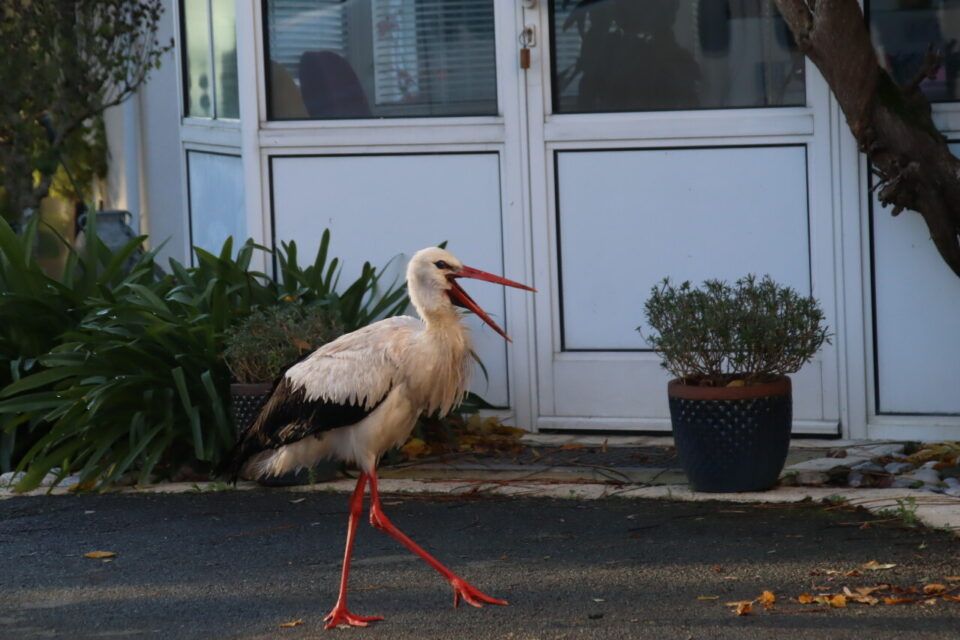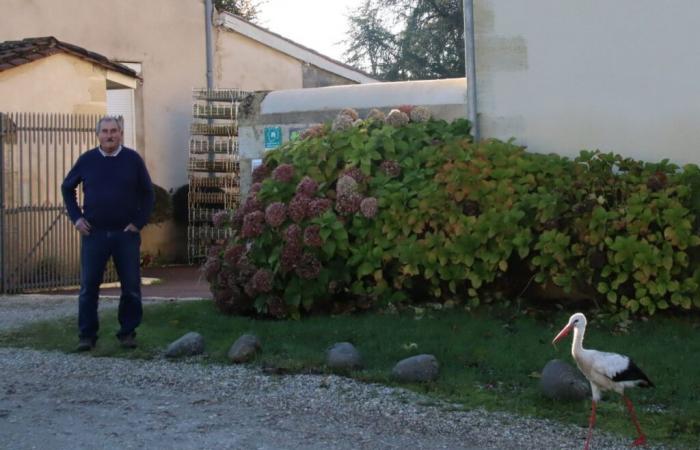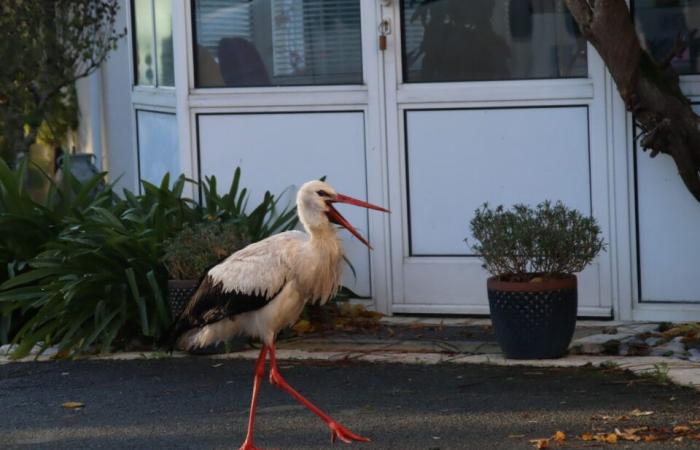Par
Edwin Bleunven
Published on
Nov. 22 2024 at 6:58 p.m
See my news
Follow Le Républicain Sud-Gironde
Colette. This is the name given by Gustave and Séraphin, two children from the Caulet district in Cérons, in Gironde, to a white stork. It has remained for more than two weeks in the gardens and on the roofs of the area.
“A fairly rare occurrence in the area,” admits Pierrick Doré, South-Gironde referent of the Bird Protection League (LPO). But then what is she doing here?
The new neighborhood mascot
« Elle walkselle eat wormsin the evening, she sleeps on the roofs. » Dominique Lafosse, owner of Clos Bourgelat in Cérons and grandfather of Gustave and Séraphin, lives with Colette.
For two weeks, her guest only left her for two days to go see if the worms were better elsewhere, but she quickly returned to the Caulet neighborhood. For the most great joy of Dominique and his grandchildren.
Claude Uteau, Dominique Lafosse's neighbor, also fell in love with this funny bird which has only one drawback… its feces, which she scatters all over the walls and terraces of the neighborhood. “It quickly became the mascot here,” he specifies while making sure that Colette does not get too close to the bend and the cars passing by.
It's reassuring that it is close to housing, because it won't be bothered by the noise of hunting shots.
Attracted by worms and frogs
If this presence intrigues the inhabitants of the neighborhood, they let him live his life peacefully and hunt its prey. “Just now she brought back a frog in front of my house,” says the winegrower while going to see if the victim is still there. Too late, she has already been submerged by Colette.
The presence of food is one of the obvious explanations for his stay in Cérons according to Pierrick Doré, South-Gironde referent of the LPO.
The National Inventory of Natural Heritage (INPN) explains that the white stork “feeds on various vertebrates and invertebrates, the volume of which rarely exceeds that of a mouse. In dry years, insects and small rodents are sought after, but aquatic animals are preferred in wet years.”
What is the INPN?
The national inventory of natural heritage is a reference platform on the state and conservation of French biodiversity and geodiversity, in mainland France and overseas, the portal of the National Inventory of Natural Heritage (INPN) disseminates and promotes data on species (fauna, flora, fungi), habitats, protected areas and geological heritage.
Usually gregarious (living in groups) and migratorythe white stork can become sedentary in certain regions and can nest alone. The mild weather and the high humidity can perhaps explain why this bird feels good near Cérons.
Indeed, the INPN specifies that the stork's habitat “generally consists of open or bushy environments in which food is easily accessible, particularly meadow environments and wetlands. Forest areas are avoided.”

A rare presence in the Cérons sector
Some storks live in the marshes of Gironde or even in Libourne. In 2023, BioSphère Environnement, an institute of ecologists, also monitored 15 storks from the Gironde marshes. Among them, nine did not migrate and remained in the region. However, the locality of Cérons surprises Pierrick Doré of the LPO:
It's quite rare around here. Sometimes there are some in Virelade, but they are disturbed by the hunters' shots, so they don't stay. Otherwise, some nest in Libourne. What is surprising is that she is alone.
If you come across an animal in distress
It is important to remember that a stork is a wild animal and that you must therefore leave a distance between the animal and you (both for you and for it). If you see an animal exhibiting abnormal behavior – which does not seem to be the case for Colette the stork – it is important to make some observations before intervening. This is what the LPO points out: “An animal (bird, mammal, reptile or amphibian) is in distress if it shows signs of weakness, apparent injuries, abnormal behavior. Before any intervention, it is necessary to determine whether an animal is truly in distress or not. If it is a young one, it will have a better chance of surviving in the wild, raised by its parents, than by the hand of Man. »
Did Colette get lost on the road to the African continent, did she take a break along the way or did she find her new home around Clos Bourgelat? Only time will tell.
Follow all the news from your favorite cities and media by subscribing to Mon Actu.








